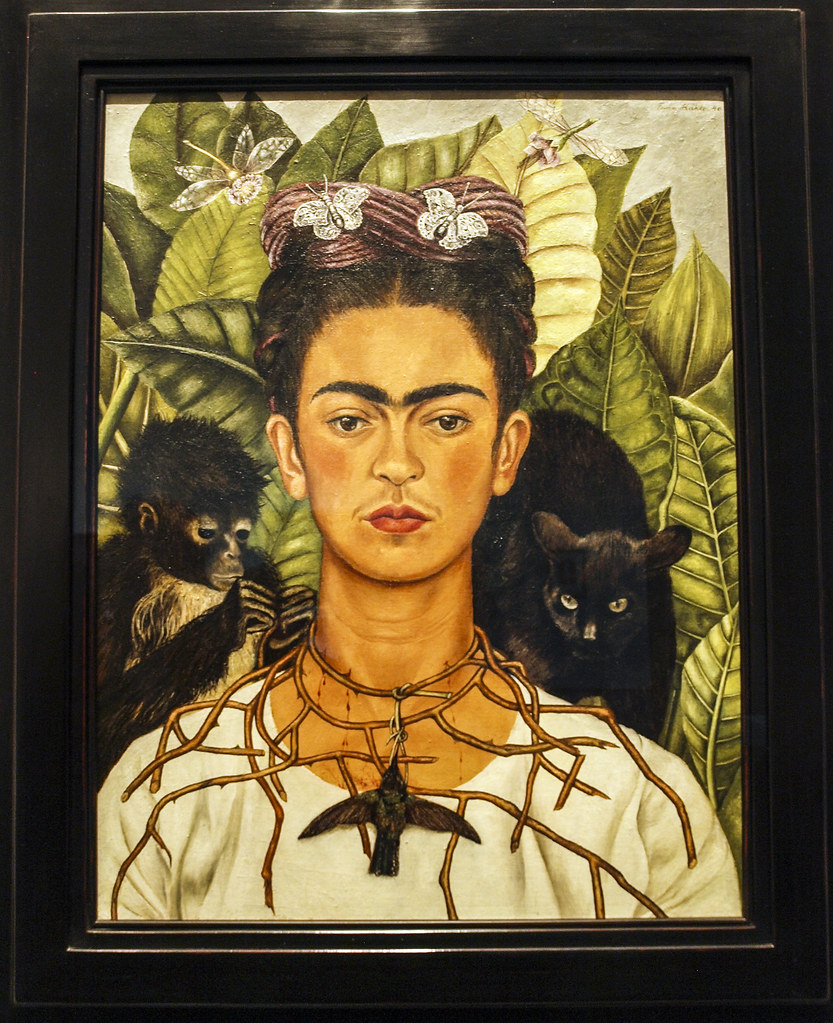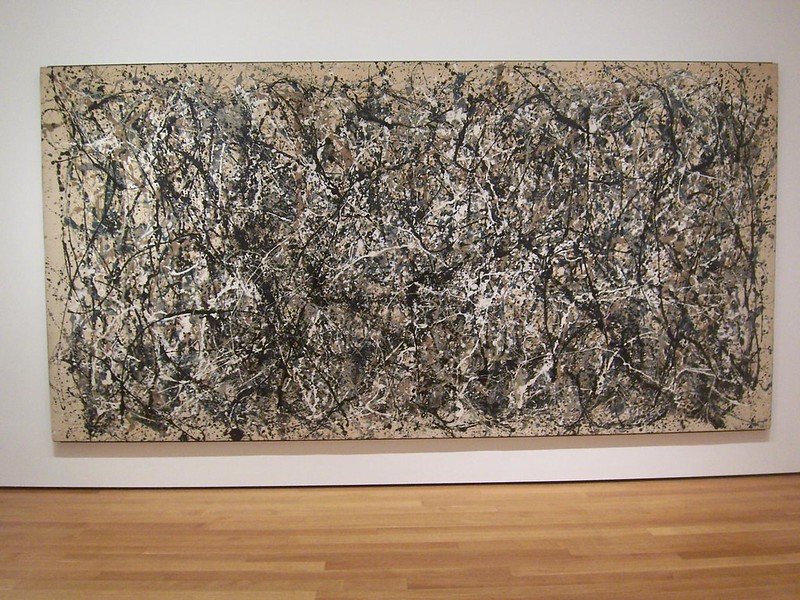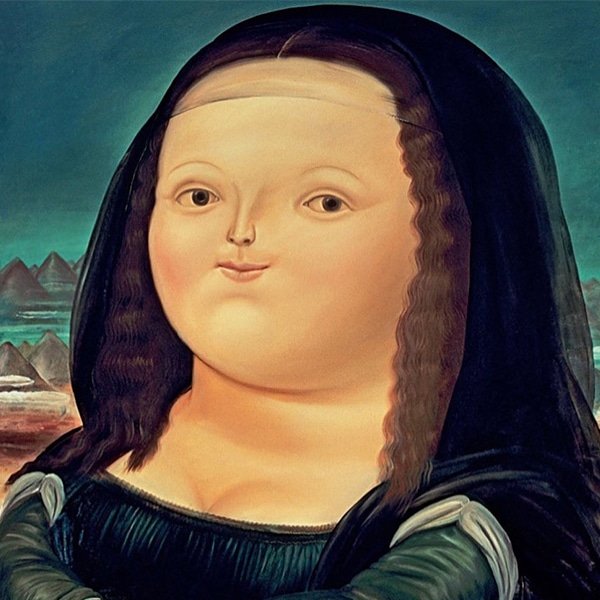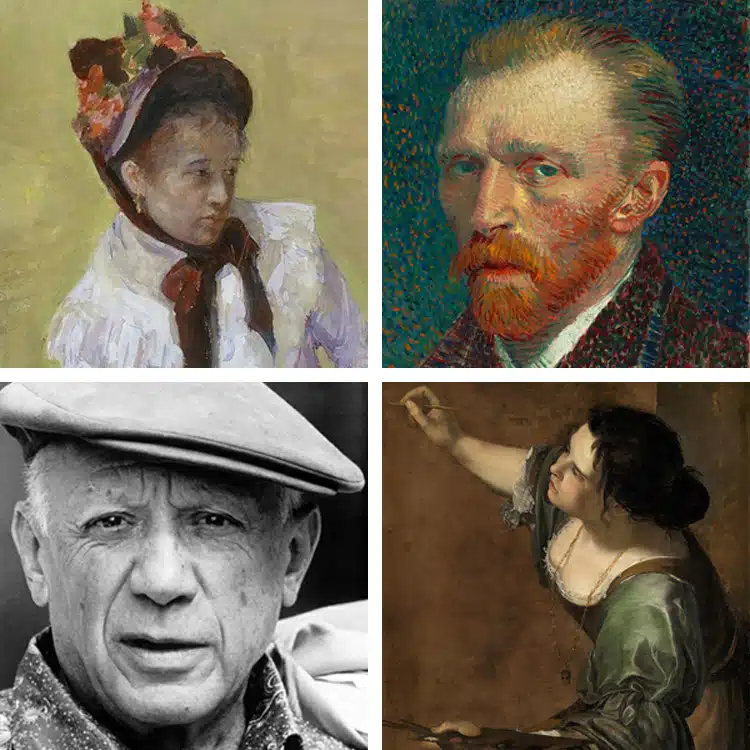
Mary Cassatt, Vincent van Gogh, Pablo Picasso, and Artemisia Gentileschi. (Photo: (clockwise from top left) (1) The Met via Wikimedia Commons, Public domain; (2) The Art Institute of Chicago via Wikimedia Commons, Public domain; (3) Argentina. Revista Vea y Lea via Wikimedia Commons, Public domain; (4) via Wikimedia Commons, Public domain)
This post may contain affiliate links. If you make a purchase, My Modern Met may earn an affiliate commission. Please read our disclosure for more info.
When we think about the “greatest” of all time, what does that really mean? What earns someone that title? Is it sheer genius and innovation? Hard work and perseverance? In the history of art, there are a lot of incredible painters. But there are some who stand just a hair above the rest and have created a lasting legacy that endures well beyond their lifetime.
So who are the greatest painters of all time? Not only are they technically skilled, but these artists have all made important contributions that have changed Western culture. Many of these artists were considered avant-garde because they pushed boundaries and made startling innovations. Most were already considered geniuses during their lifetimes and enjoyed unparalleled success, while others weren't acknowledged until after their death.
To be considered one of the greatest painters of all time, one needs to possess a special combination of technical skills, outlandish creative thinking, and determination. Blended together, all of these attributes produce outstanding works of genius that continue to thrill, some hundreds of years after their initial creation.
We've put together our list of the 16 greatest painters of all time, taking into consideration all of these factors, as well as their best-known masterpieces. While you may have a few names you'd like to see on this list, there's no denying that the artists selected have made an indelible impact on art and culture as we know it.
16 Greatest Painters of All Time
Leonardo da Vinci (1452–1519)
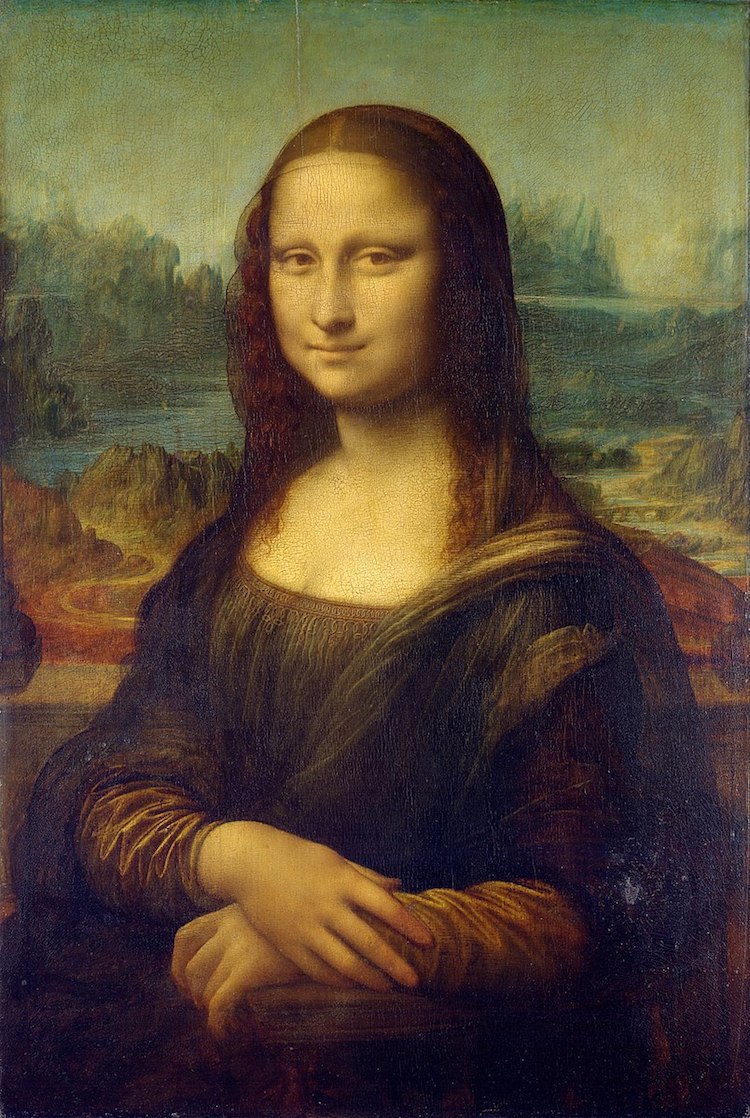
Leonardo da Vinci, “Mona Lisa,” ca. 1503-1516 (Photo: Galerie de tableaux en très haute définition via Wikimedia Commons)
Full Name | Leonardo di ser Piero da Vinci |
Born | April 15, 1452 (Vinci, Italy) |
Died | May 2, 1519 (Amboise, France) |
Notable Artwork | Mona Lisa, Vitruvian Man |
Movement | Italian Renaissance |
Not only did Leonardo da Vinci experiment with mediums, but he also innovated different ways of creating striking compositions. In fact, his signature triangular composition is still used today and is widely considered one of the most visually pleasing painting layouts. He was also an early advocate of studying anatomical models to perfect his art, something that was illegal at the time.
Although legendary for paintings like Mona Lisa and The Last Supper, da Vinci's artistic output was relatively small; only 17 surviving works can be attributed to him.
Famous works of art: Lady With an Ermine (1489–91), Vitruvian Man (c. 1492), The Last Supper (1498), Mona Lisa (1503–1516)
Best Places to View da Vinci:
- Louvre (Buy tickets)
- Santa Maria delle Grazie (Buy tickets)
- National Gallery, London (Book guided visit)
Michelangelo (1475–1564)
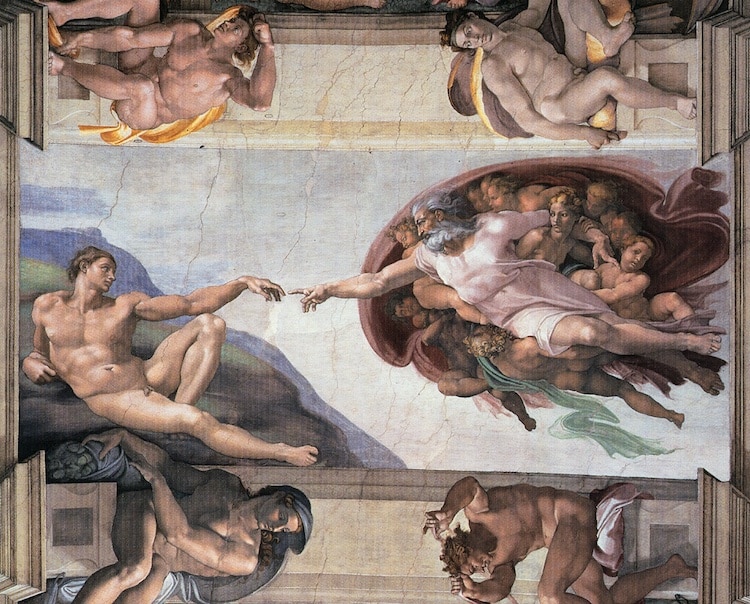
Michelangelo, “The Creation of Adam,” c. 1511 (Photo: Public domain via Wikimedia Commons)
Full Name | Michelangelo di Lodovico Buonarroti Simoni |
Born | March 6, 1475 (Caprese, Italy) |
Died | February 18, 1564 (Rome, Italy) |
Notable Artwork | Sistine Chapel ceiling, David |
Movement | Italian Renaissance |
While Michelangelo may have viewed himself as a sculptor, his placement on this list shows his true genius. Though relatively few Michelangelo paintings survive, those that do are considered some of the best in the world. His ability to quickly master fresco painting and take it to new heights is evident in both the Sistine Chapel Ceiling and The Last Judgment, which continue to inspire artists today.
Famous works of art: Pietà (1498–99) David ( 1501–4), Sistine Chapel ceiling (1508–12), The Last Judgment (1536–1541)
Best Places to View Michelangelo:
- Vatican Museums (Buy tickets)
- Uffizi Galleries (Buy tickets)
Raphael (1482–1520)
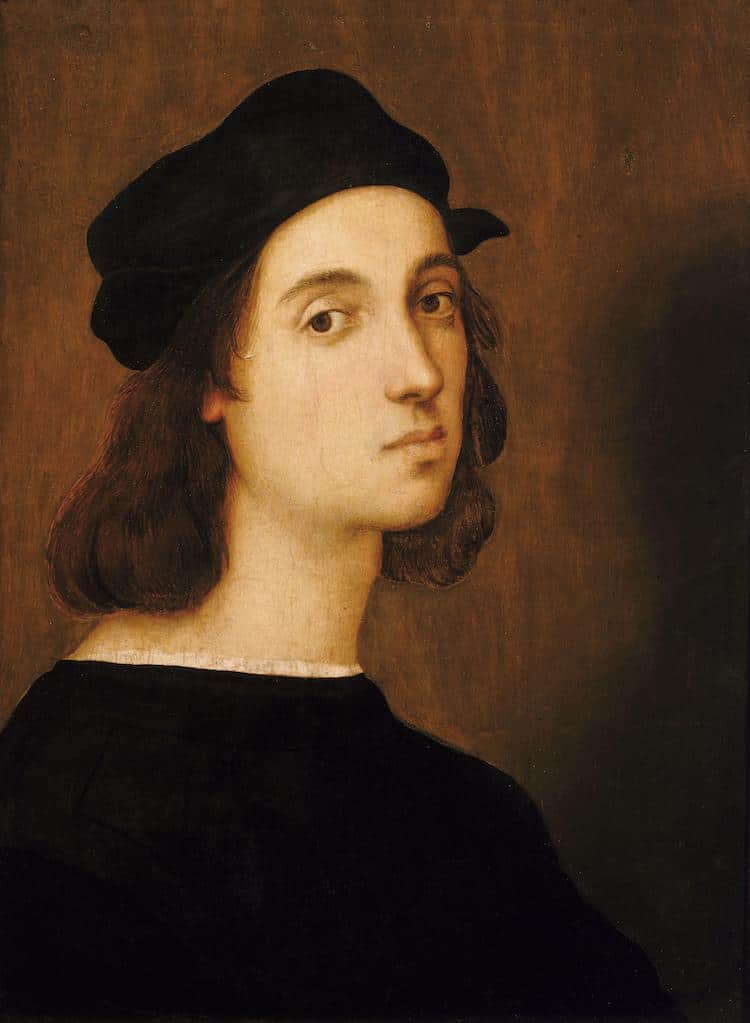
Raphael, “Self Portrait,” 1504–1506 (Photo: Wikimedia Commons, Public domain)
Full Name | Raffaello Sanzio da Urbino |
Born | March 28 or April 6, 1483 (Urbino, Italy) |
Died | April 6, 1520 (Rome, Italy) |
Notable Artwork | The School of Athens |
Movement | Italian Renaissance |
Raffaello Sanzio da Urbino, best known simply as Raphael (1482–1520), is held today as a master of form and composition. Although he died at just 37 years old, the Italian architect and painter left behind a vast body of work. He is primarily known for his Madonna paintings, including his vivid Madonna in the Grass, as well as his large-scale mural, The School of Athens, which celebrates philosophy.
Famous works of art: Wedding of the Virgin (1504), School of Athens (1511), The Transfiguration (1520)
Best Places to View Raphael:
- Vatican Museums (Buy tickets)
- Uffizi Galleries (Buy tickets)
Artemisia Gentileschi (1593–C. 1656)
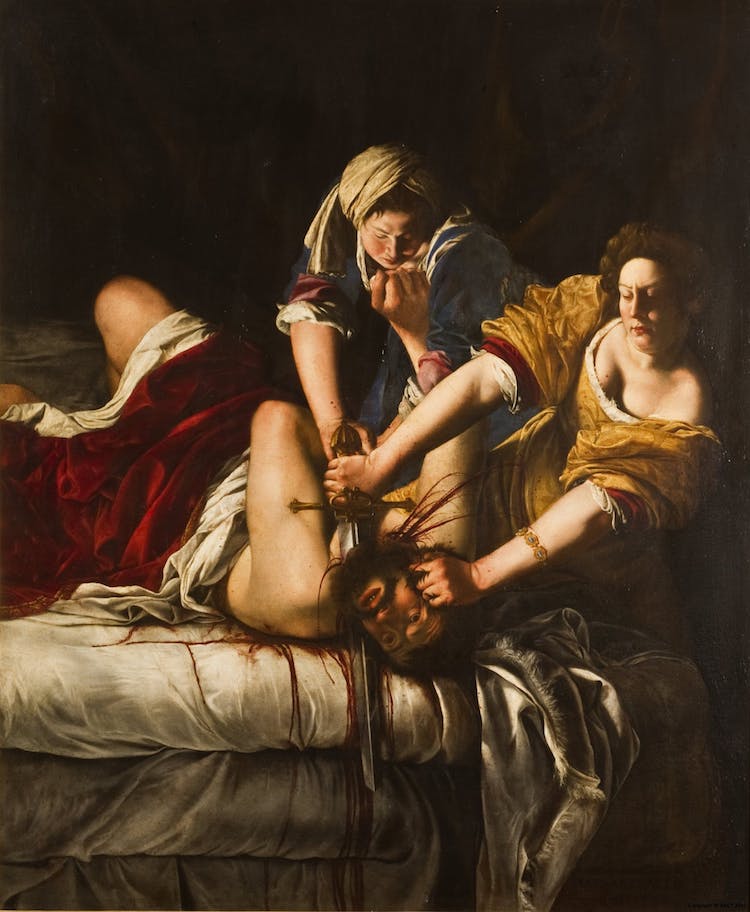
Artemisia Gentileschi, “Judith Slaying Holofernes,” 1614-1620 (Photo: via Wikimedia Commons, Public domain)
Full Name | Artemisia Gentileschi |
Born | July 8, 1593 (Rome, Italy) |
Died | c. 1656 (Naples, Italy) |
Notable Artwork | Judith Slaying Holofernes |
Movement | Baroque |
This powerhouse of Baroque painting is also one of the first female artists to see great success. She was also young and producing professional art by the age of 15. Through the course of the 17th century, Artemisia Gentileschi created dynamic and explosive paintings that feature her trademark chiaroscuro and rich colors. While her art was sometimes overshadowed by her Baroque peer Caravaggio, over time her incredible skill and role in pioneering female artists have come to be appreciated.
Famous works of art: Judith Slaying Holofernes (1614–1620)
Best Places to View Artemisia Gentileschi:
- Uffizi Galleries (Buy tickets)
- Pitti Palace (Buy tickets)
- Capodimonte Museum (Buy tickets)
Rembrandt (1606–1669)
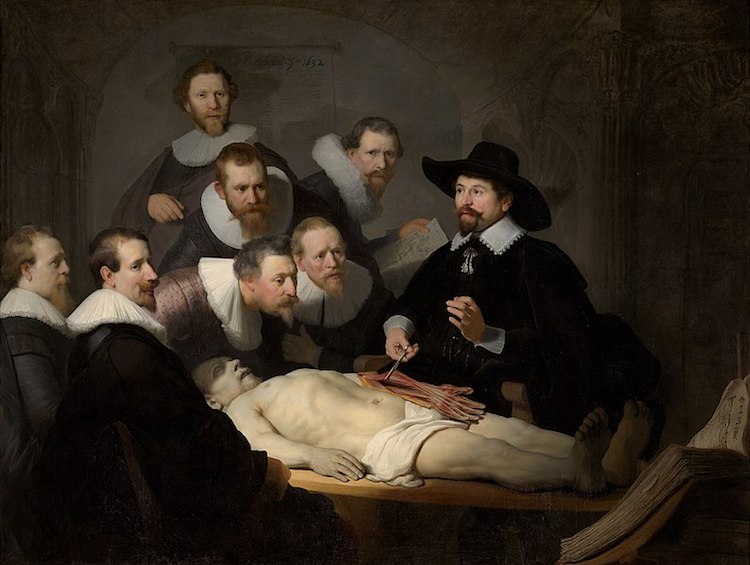
Rembrandt, “The Anatomy Lesson of Dr Nicolaes Tulp,” 1632 (Photo: Mauritshuis online catalogue via Wikimedia Commons)
Full Name | Rembrandt Harmenszoon van Rijn |
Born | July 15, 1606 (Leiden, Netherlands) |
Died | October 4, 1669 (Amsterdam, Netherlands) |
Notable Artwork | The Night Watch |
Movement | Baroque |
Rembrandt van Rijn is so famous that even today we call this Dutch master by his first name. Painting everything from genre scenes to landscapes to great historical and mythological paintings, Rembrandt was the dominant force in Dutch art for much of the 17th century. Not only did he create some of the most significant group portraits of the Dutch Golden Age but he also left behind about 80 self-portraits in the form of paintings, etchings, and drawings.
His masterful use of light, as well as his refined and expressive approach to painting, have made him a favorite amongst art lovers to this day. If you want to see his work in person, look for his portraits or illustrations from the Bible as they are among his most well-regarded.
Famous works of art: Anatomy Lesson of Dr. Tulp (1632), The Night Watch (1642)
Best Places to View Rembrandt:
- Rijksmuseum (Buy tickets)
- Metropolitan Museum of Art (Buy tickets)
- National Gallery, London (Book guided visit)
J.M.W. Turner (1775–1851)
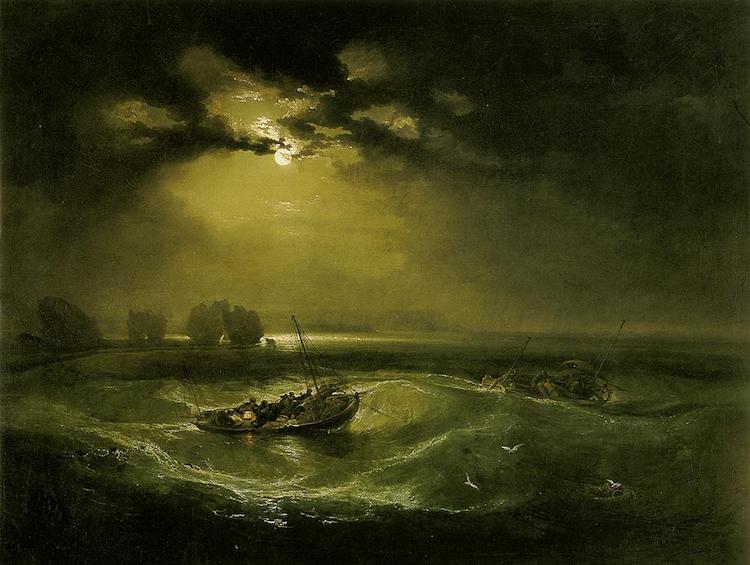
JMW Turner, “‘Fishermen at Sea,” 1796 (Photo: via WikiArt, Public domain)
Full Name | Josph Mallord William Turner |
Born | April 23, 1775 (London, England) |
Died | December 19, 1851 (Chelsea, England) |
Notable Artwork | Rain, Steam and Speed — The Great Western Railway |
Movement | Romanticism |
British Romantic painter J.M.W. Turner is known as a forerunner of modern art. Coming from traditional Neoclassical painting, Turner began striving for realism in his work—which was unheard of at the time. Through thousands of watercolors and oil paintings, he experimented with light, color, and brushwork. He even worked on his oil paintings outside, something that would later influence the Impressionists.
Famous works of art: Rain, Steam and Speed — The Great Western Railway (1844)
Best Places to View Turner:
Paul Cézanne (1839–1906)
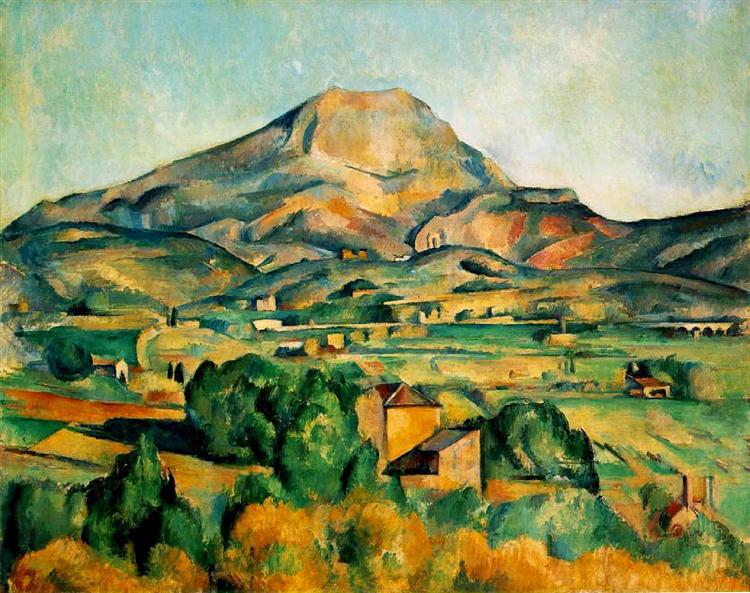
Paul Cézanne, “Mont Sainte-Victoire,” c. 1895 (Photo: via Wiki Art, Public domain)
Full Name | Paul Cézanne |
Born | January 19, 1839 (Aix-en-Provence, France) |
Died | October 22, 1906 (Aix-en-Provence, France) |
Notable Artwork | Mont Sainte-Victoire, The Card Players |
Movement | Post-Impressionism |
Leading Post-Impressionist painter Paul Cézanne has enjoyed a lasting legacy thanks to his innovative approach to perspective, vivid color palette, and use of painterly brushstrokes that were meticulously arranged into geometric forms. In fact, his preference for breaking down forms and using bold tones has often led him to be called a precursor to Cubism.
Famous works of art: The Card Players series (early 1890s), The Bathers series (1898–1905)
Best Places to View Cézanne:
- Musée d'Orsay (Buy tickets)
- Museum of Modern Art (MoMA) (Buy tickets)
- Hermitage Museum (Buy tickets)
Claude Monet (1840–1926)
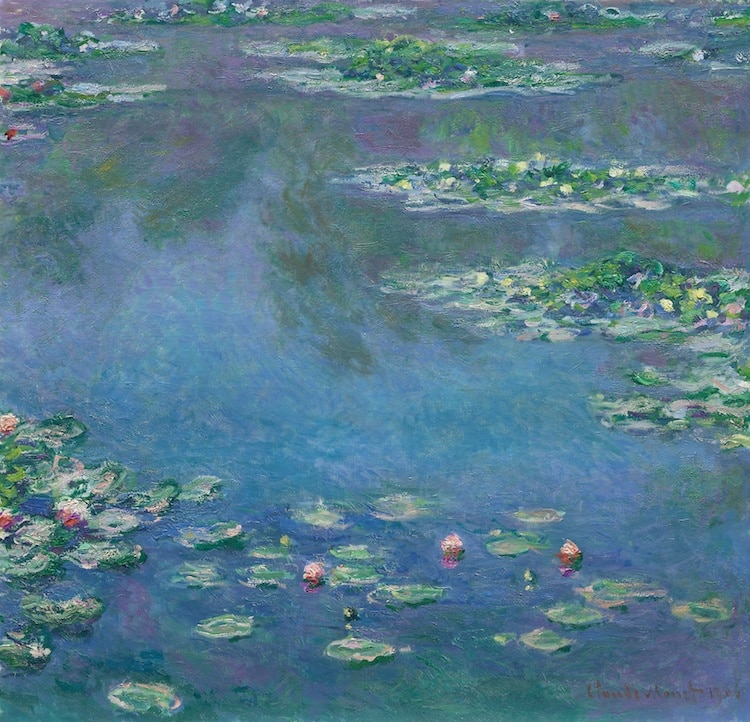
Claude Monet, “Water Lilies,” 1906 (Photo: via Art Institute of Chicago, Pubic domain)
Full Name | Oscar-Claude Monet |
Born | November 14, 1840 (Paris, France) |
Died | December 5, 1926 (Giverny, France) |
Notable Artwork | Water Lilies series |
Movement | Impressionism |
From bringing his easel out of the studio and into the environment to his landmark studies of time and light, Claude Monet is perhaps the most beloved of all Impressionist painters. In fact, his painting Impression, Sunrise is credited with launching the entire art movement, and his series of water lilies is a part of his lasting legacy with over 250 iterations of the subject.
Famous works of art: Impression, sunrise (1872), Water Lilies series (1883–1926)
Best Places to View Monet:
- Musée d'Orsay (Buy tickets)
- Museum of Fine Arts, Boston (Buy tickets)
- Musée de l'Orangerie (Buy tickets)
Mary Cassatt (1844–1936)
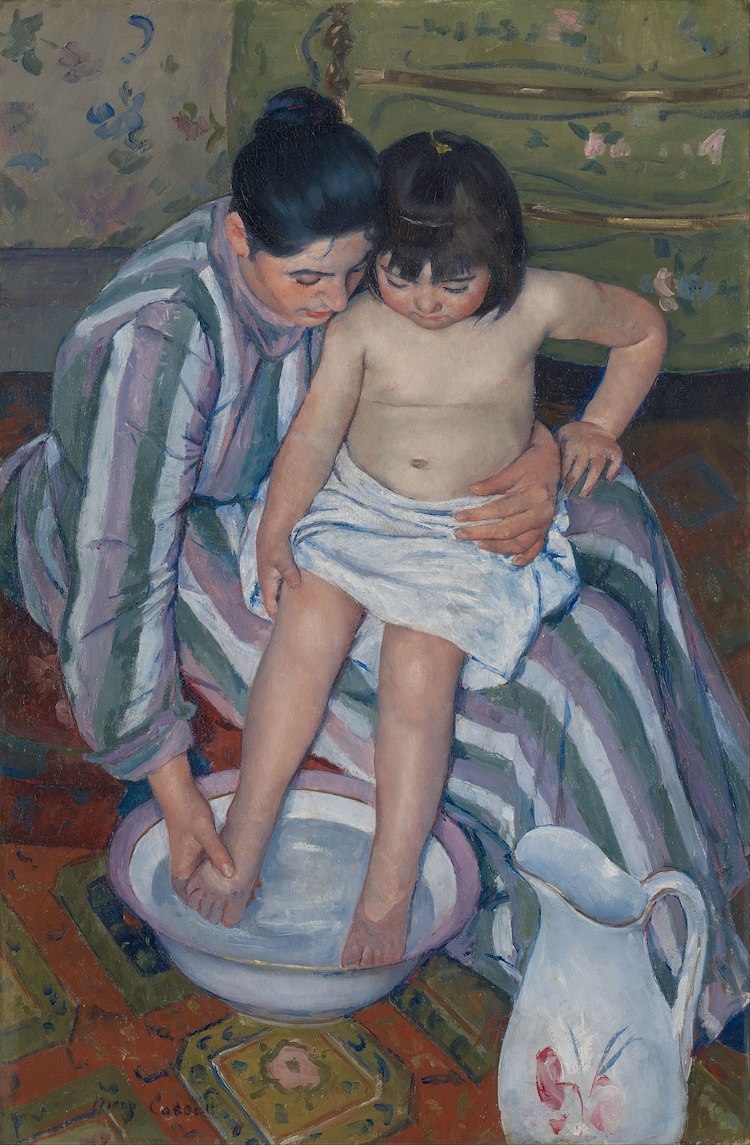
Mary Cassatt “The Child's Bath,” 1893. (Photo: via Wikimedia Commons, Pubic domain)
Full Name | Mary Stevenson Cassatt |
Born | May 22, 1844 (Allegheny City, PA, USA) |
Died | June 14, 1926 (Le Mesnil-Theribus, France |
Notable Artwork | The Child's Bath |
Movement | Impressionism |
As part of the Impressionist group, Mary Cassatt had a significant role in shaping the movement's legacy. The American artist broke boundaries with her loose brushstrokes and luminous colors and is well known for her focus on mothers and children as her subjects. Her intimate depictions showing even the most ordinary moments in motherhood were revolutionary at the time and had helped forge her legacy and pave the way for future female artists.
Famous works of art: Little Girl in Blue Armchair (1878), Child's Bath (1893)
Best Places to View Mary Cassatt:
- Art Institute of Chicago (Buy tickets)
- National Gallery of Art, Washington D.C. (Visit)
- Brooklyn Museum (Buy tickets)
Vincent van Gogh (1853–1890)
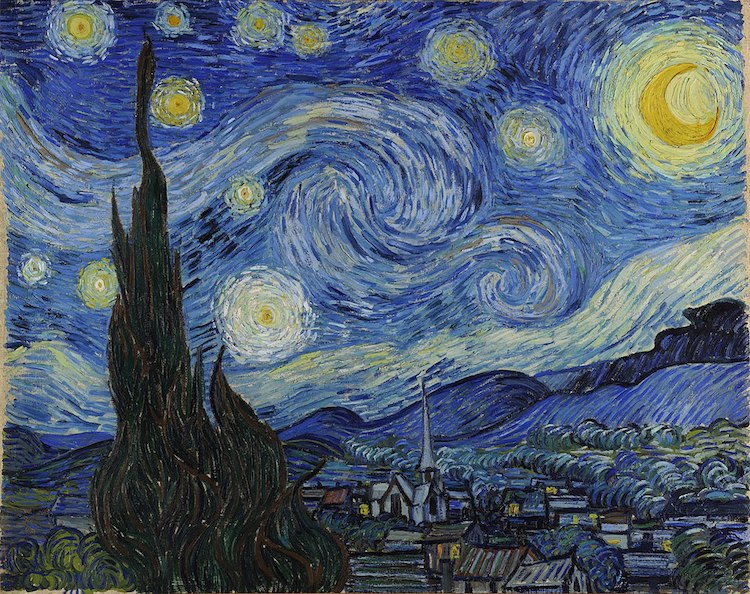
Vincent van Gogh, “Starry Night,” 1889 (Photo: via Wikimedia Commons, Public domain)
Full Name | Vincent Willem van Gogh |
Born | March 30, 1853 (Zundert, The Netherlands) |
Died | July 29, 1890 (Auvers-sur-Oise, France) |
Notable Artwork | The Starry Night, Sunflowers |
Movement | Post-Impressionism |
Though he is seen today as one of the most influential painters in Western art, Vincent van Gogh was not commercially successful during his lifetime. Since the early 20th century, however, his masterful paintings have been prized for their expressive emotion. Filled with dramatic brushstrokes and bold color, the Post-Impressionist painter's artwork is a roadmap to modern art.
Van Gogh's work, particularly Starry Night, remains so iconic that it is celebrated today as immersive art installations and recreated using drone technology.
Famous works of art: The Starry Night (1889), Sunflowers (1887)
Best Places to View Van Gogh:
- Van Gogh Museum (Buy tickets)
- Museum of Modern Art (MoMA) (Buy tickets)
- Musée d'Orsay (Buy tickets)
Gustav Klimt (1862–1918)
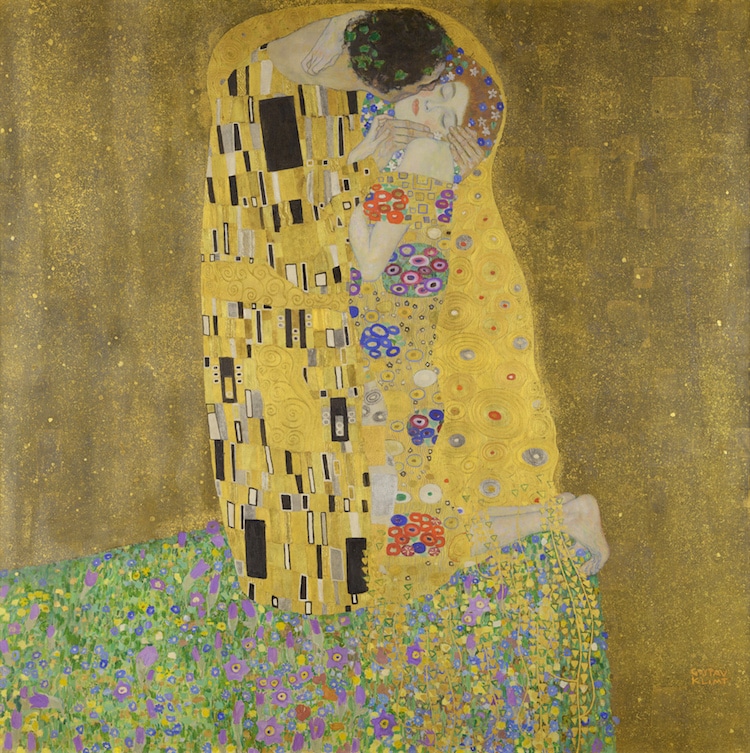
Gustav Klimt, “The Kiss,” oil and gold leaf on canvas, 1907–1908 (Photo: Belvedere via Wikimedia Commons, Public domain)
Full Name | Gustav Klimt |
Born | July 14, 1862 (Baumgarten, Austria) |
Died | February 6, 1918 (Vienna, Austria) |
Notable Artwork | The Kiss |
Movement | Vienna Secession, Art Nouveau |
A leader of the Vienna Secessionist artistic movement (which was associated with Art Nouveau), Austrian artist Gustav Klimt left behind thousands of drawings and a vast portfolio of painted works. He is most well-known for the collection of glistening, gilded works he produced during his Golden Phase.
Famous works of art: The Kiss (1907–8)
Best Places to View Gustav Klimt:
- Belevedere (Buy Tickets)
- The Secession Building (Buy Tickets)
- Neue Galerie (Visit)
Pablo Picasso (1881–1973)
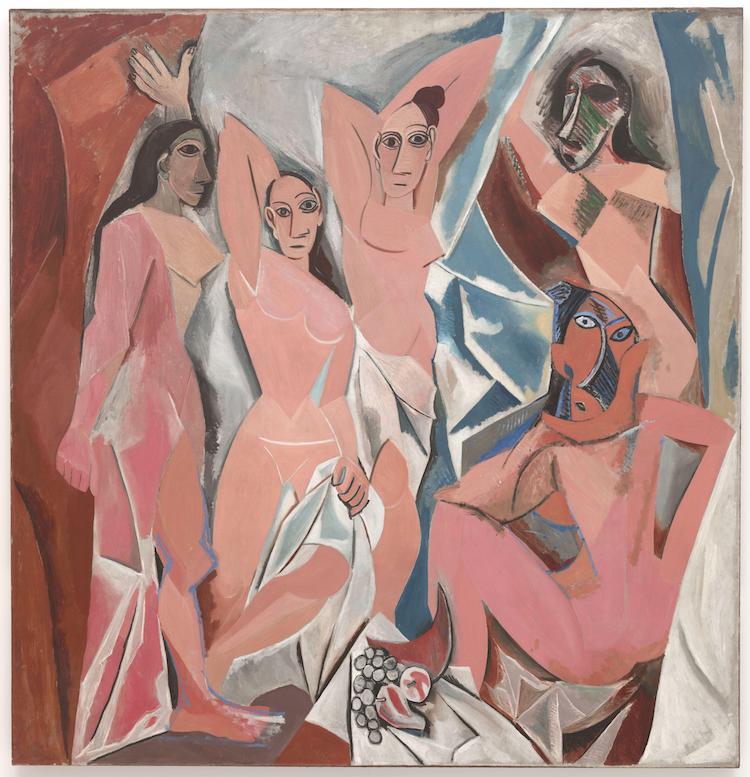
Pablo Picasso, “Le Demoiselles d'Avignon,” 1907. (Photo: MoMA via Wikimedia Commons, Fair Use)
Full Name | Pablo Diego José Francisco de Paula Juan Nepomuceno María de los Remedios Cipriano de la Santísima Trinidad Ruiz y Picasso |
Born | October 25, 1881 (Málaga, Spain) |
Died | April 8, 1973 (Mougins, France) |
Notable Artwork | Les Demoiselles d'Avignon, Guernica |
Movement | Cubism |
In an 80-year career that moves through multiple styles and over 20,000 works, Pablo Picasso is undoubtedly one of the most recognized names in Western art. His role in launching Cubism would be enough to cement his status in the history books, but Picasso did much more. He is recognized for showing how Classical art can be mastered—and then manipulated—to become something new, fresh, and modern.
Famous works of art: Les Demoiselles d'Avignon (1907), Guernica (1937)
Best Places to View Picasso:
- Museu Picasso (Buy tickets)
- Reina Sofia Museum (Buy tickets)
- Museum of Modern Art (MoMA) (Buy tickets)
Georgia O'Keeffe (1887–1986)
View this post on Instagram
Full Name | Georgia Totto O'Keeffe |
Born | November 15, 1887 (Sun Prairie, WI, USA) |
Died | March 6, 1986 (Santa Fe, NM, USA) |
Notable Artwork | Cow's Skull: Red, White, and Blue |
Movement | American Modernism |
Pioneering artist Georgia O'Keeffe managed to turn a standard type of painting on its head with her creative vision. While flower painting is a long-held tradition, no one had ever done it quite like O'Keeffe. Not only was she one of the first American artists to create abstract drawings, but her zoomed-in depictions of flowers have remained unique throughout history. Drawn to the American Southwest, O'Keeffe's explosive artwork helped bring attention to a new part of the country at a time when modern art was focused in New York City. “As soon as I saw it, that was my country,” she said of New Mexico, where she eventually made her home. “I’d never seen anything like it before, but it fitted to me exactly.”
Famous works of art: Jimson Weed (1936), Sky Above Clouds IV (1965)
Best Places to View Georgia O'Keeffe:
- Art Institute of Chicago (Buy tickets)
- National Gallery of Art, Washington D.C. (Visit)
- Georgia O'Keeffe Museum (Buy tickets)
Tamara de Lempicka (1898–1890)
Full Name | Tamara Rosalia Gurwik-Górska |
Born | May 16, 1898 (Warsaw, Poland) |
Died | March 18, 1980 (Cuernavaca, Mexico) |
Notable Artwork | Autoportrait (Tamara in a Green Bugatti) |
Movement | Art Deco |
Polish artist Tamara de Lempicka was a superstar of the early 20th century. Rubbing elbows with the avant-garde in Paris, she turned away from Impressionism—the popular style of the time—and focused on blazing her own trail. The graphic quality of her work and their rich, vivid colors made her a leader of Art Deco painting and earned her the nickname “The Baroness with a Brush.” Today, her work continues to be used as inspiration for designers and is emblematic of this Golden Age.
Famous works of art: Autoportrait (Tamara in a Green Bugatti) (1928)
Best Places to View Tamara de Lempicka:
- Musée des Beaux-Arts de Nantes (Buy tickets)
- Metropolitan Museum of Art (Buy tickets)
- National Museum of Women in the Arts (Buy tickets)
Frida Kahlo (1907–1954)
Full Name | Magdalena Carmen Frida Kahlo y Calderón |
Born | July 6, 1907 (Coyoacán, Mexico City, Mexico) |
Died | July 13, 1954 (Coyoacán, Mexico City, Mexico) |
Notable Artwork | The Two Fridas |
Movement | Surrealism, Magic Realism |
Her highly intimate series of self-portraits and the embracement of her cultural heritage are just some of the things that make Frida Kahlo one of the greatest painters of the 20th century. Today she has become a pop culture icon, but this shouldn't overshadow her great skill as a painter and her innovations in bringing Mexican culture to a wider audience. Her deeply personal self-portraits also point to a new direction for modern artists, where art was about expressing inner emotion rather than attempting to please a collector or patron.
Famous works of art: The Two Fridas (1932), Self-Portrait with Thorn Necklace and Hummingbird (1940)
Best Places to View Frida Kahlo:
- La Casa Azul (Visit)
- Museum of Modern Art (MoMA) (Buy tickets)
- Museo de Arte Moderno (Visit)
Jackson Pollock (1912–1956)
Full Name | Paul Jackson Pollock |
Born | January 28, 1912 (Cody, Wyoming) |
Died | August 11, 1956 (Saratoga Springs, New York) |
Notable Artwork | Autumn Rhythm |
Movement | Abstract Expressionism |
American painter Jackson Pollock is best known for his innovative painting technique. By dripping paint on the canvas, the Abstract Expressionist created dynamic, abstract artwork that revolutionized the art scene. Pollock used the force of his whole body to splash and pour paint on his canvases, upending traditional notions of how painters were meant to operate. His studio often came with him in his work with some paintings containing nails or cigarette butts within the pigment.
Famous works of art: No. 5 (1948), Autumn Rhythm: Number 30 (1950)
Best Places to View Pollock:
- Solomon R. Guggenheim Museum (Buy tickets)
- Peggy Guggenheim Collection (Buy tickets)
- Tate Modern (Visit)
This article has been edited and updated.
Related Articles:
18 Most Famous Sculptures You Need to Know
14 Famous Female Painters Every Art Lover Should Know
8 Famous Artists’ Studios You Can Visit Today
10 Real-Life People Who Became the Stars of Art History’s Most Famous Paintings

